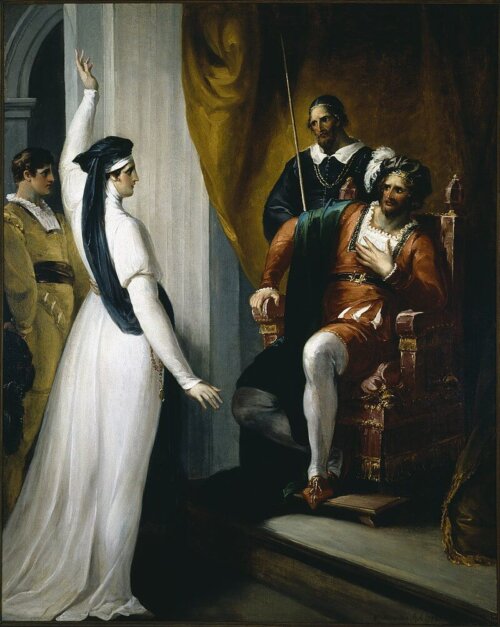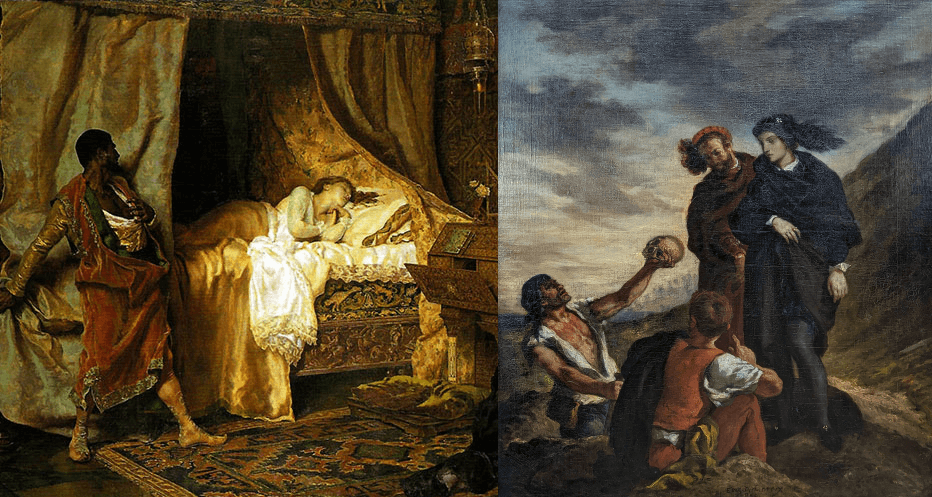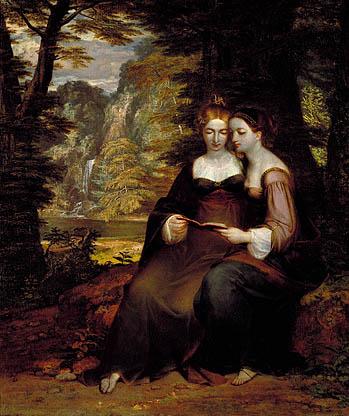Sir Arthur Bliss’ “A Colour Symphony”

Many are the emotional states, natural phenomena, and physical gestures that music is capable of evoking for listeners. The link between the musical and the visual has always been strong, and particularly prominent is the association of color and music. We speak metaphorically of the “tone colors” of various instruments or voices, yet listeners have also associated keys or tonalities with actual visual color, and entire key-color schemes have been worked out (with C major representing bright yellow light, for instance). Isaac Newton examined the possible connections between the vibrations of the musical scale and those of the color spectrum. Synesthesia is a clinical term for the tendency of some people to associate colors with sounds, a condition which the Russian composer Alexander Scriabin exploited in his eccentric symphonic works. There has even been a curious instrument, the color organ, that synthesizes music and visuals by means of colored lights and a keyboard—part of an ongoing quest to unite the various arts.
But surely A Colour Symphony by Sir Arthur Bliss (1891-1975) stands as the most intellectually and emotionally satisfying attempt to yoke color to music. Bliss was an outstanding contributor to the English musical renaissance, the early 20th-century movement that brought England out of her longstanding musical doldrums. Although strongly linked to the British musical establishment—he served as Master of the Queen’s Musick from 1953—Bliss was actually half American (his father was a Massachusetts businessman who had settled in London) and more than one critic has heard in his music a fusion of English sentiment with American bravado.
He received early composing advice from two other leaders in the English renaissance, Ralph Vaughan Williams and Gustav Holst, but his studies were interrupted by the outbreak of World War I. Bliss served honorably and survived serious wounds at the Somme and Cambrai. Bliss’ brother Kennard died in the war, which inflicted a great emotional wound in Bliss. In 1918 he took a major step in England at that time by converting to Catholicism; his faith would color a number of his subsequent works, including his choral works The Beatitudes and Shield of Faith.
Bliss emerged from the war “a forthright young man bursting with energy and purpose”* and determined to make his name as a composer. Rejecting the Germanic Brahmsian style as a relic of the prewar past, Bliss became a progressive composer, even somewhat of an enfant terrible influenced by continental modernists like Stravinsky. A Colour Symphony came about as a commission from Sir Edward Elgar, Bliss’ mentor and the composer whose mantle he eventually took on as an elder statesman of English music. The symphony would establish his reputation and remain his most popular work—but it had considerable birth pangs.
In his autobiography Bliss describes the writer’s block he faced as he tried to decide what shape his new symphony would take. By his own admission, he was a composer who found it easier to write music that was tied to visual or poetic associations than music that was purely “abstract.” So it was fortuitous that, while rummaging in a friend’s library, he happened upon a book on heraldry which described the symbolic associations of primary colors. Bliss must have experienced the “click” that creative personalities do when inspiration comes at last: “At once I saw the possibility of so characterizing the four movements of a symphony, that each should express a colour as I personally perceived it.”
The plan of the symphony’s four movements is as follows:
I. Purple: the color of Amethysts, Pageantry, Royalty and Death (Andante maestoso)
II. Red: the color of Rubies, Wine, Revelry, Furnaces, Courage and Magic (Allegro vivace)
III. Blue: the color of Sapphires, Deep Water, Skies, Loyalty and Melancholy (Gently flowing)
IV. Green: the color of Emeralds, Hope, Youth, Joy, Spring and Victory (Moderato)
What’s remarkable is that even with this extra-musical program, the work satisfies the formal requirements of a symphony, with a stately moderato movement (Purple) giving way to an exuberant scherzo (Red), a slow meditation (Blue), and ending with a tour-de-force finale (Green). The composer has filled the abstract form with compelling subjective content. Bliss also uses orchestral “color” perceptively, with various instruments featured in combination or solo.
And this is a true symphony, not merely a suite of four separate character pieces, as attested by the well-integrated structure and subtle thematic links between the movements. Two dark and somewhat melancholy movements (Purple and Blue) flank two bright, joyous ones (Red and Green). The latter two movements are the most modern, with explosive eruptions of dissonance showing the influence of Igor Stravinsky. Yet other moments breathe the spirit of English pastoralism, with wonderful modal melodies and an Elgarian air of stately grandeur. Purple is the movement Elgar would have least objected to: Bliss develops three distinct themes into a regal processional that approaches and recedes from view. Red bursts onto the scene fiery and passionate, a boiling cauldron of musical energy, evoking Bacchic revelry. Blue is a showcase for woodwind solos heard against a gently undulating rhythm “like water lapping against a moored boat or stone pier” and some downright “bluesy” harmonies.
The symphony’s premiere, in Gloucester Cathedral with the composer leading the London Symphony Orchestra, was not a blazing success, for which Bliss blamed inadequate rehearsal time and spatial problems on stage. But although Elgar found the symphony “disconcertingly modern,” several critics were appreciative, and the work cemented Bliss’ reputation as an up-and-coming composer. A Colour Symphony no longer sounds modern or disconcerting to us today—rather, a brilliant fusion of the old and the new and a highly original concept executed with flair. Robust, spirited, and youthful, it shows the composer’s keenly receptive ear and wide-ranging interests.
Critics have pointed to the attributes Death, Courage and Loyalty as a nod to Bliss’ wartime experience and traditional values that he and his comrades fought to uphold. The war, and especially the death of his brother, scarred him deeply. Yet the work ends in a burst of rebirth and growth in which Bliss seems to surmount his grief and look forward to a happier life.
The fugue subject that opens Green at first resembles a Schoenberg 12-tone row in its stark chromaticism, but Bliss quickly imbues it with tonality and harmonic development. The fugue turns out to be a double fugue (effectively, a fugue that develops two different subjects) which in its cumulative layering of themes brings the symphony to an exhilarating conclusion.
This is finally an optimistic, hopeful work, banishing death and despair in a blaze of vitality. The 31-year-old Bliss created a piece of music that celebrates the life of the senses and the joy of creation, evoking deep cultural memories as well as a personal energy and dynamism born of bitter experience. A Colour Symphony deserves at least as many admirers as Holst’s The Planets and stands as a uniquely original achievement in symphonic music.
This was originally published with the same title in The Imaginative Conservative on September 11, 2020.




